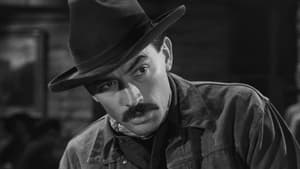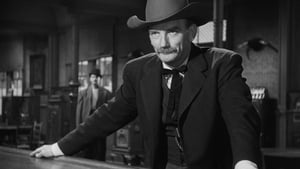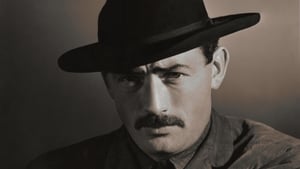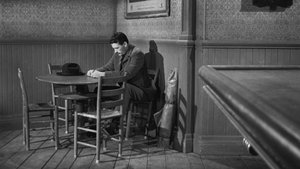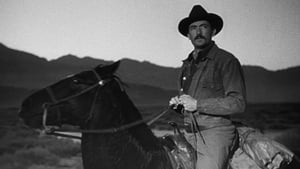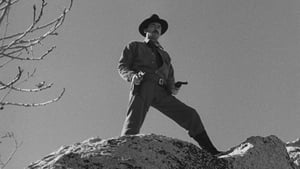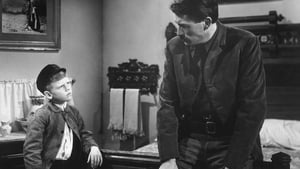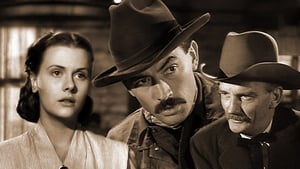Contact: info@alwanfilm.com
Video Sources 0 Views
- Watch trailer
- The Gunfighter

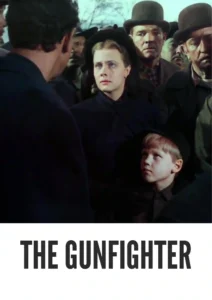
The Gunfighter 1950 Colorized
Synopsis
Table of Contents
ToggleReview: The Gunfighter 1950 Colorized – A Classic Western of Consequences and Redemption

Introduction
The Gunfighter, released in 1950, is a landmark Western film directed by Henry King. Known for its groundbreaking narrative structure, nuanced characterizations, and moral depth, this classic Western subverts genre conventions to deliver a thought-provoking exploration of the consequences of violence and the quest for redemption. In this review, we will journey into the untamed frontier of The Gunfighter and uncover its enduring legacy in the Western genre.
Check The Full Colorized Movies List
Check Our Colorized Movies Trailer Channel
Understanding The Gunfighter 1950 Colorized: Director, Cast, and Genre
Directed by Henry King, The Gunfighter features a stellar cast led by Gregory Peck in the role of Jimmy Ringo, alongside Helen Westcott, Millard Mitchell, and Jean Parker. The film falls within the genre of Western, characterized by its rugged landscapes, moral conflicts, and larger-than-life heroes.
Exploring the World of The Gunfighter 1950 Colorized: Plot and Characters
Set against the backdrop of the Old West, The Gunfighter follows the story of Jimmy Ringo, a legendary gunslinger seeking to leave his violent past behind. However, Ringo’s notoriety follows him wherever he goes, making it impossible for him to escape the consequences of his actions. As he navigates the treacherous terrain of the frontier, Ringo must confront his own demons and seek redemption before it’s too late.
The Art of Film Colorization
While The Gunfighter was originally filmed in black and white, its early colorized version adds a new dimension to its breathtaking cinematography. The colorization process enhances the film’s sweeping vistas and captures the rugged beauty of the Old West with stunning clarity.
Early Colored Films: A Brief History
The history of early colored films is marked by innovation and experimentation as filmmakers sought to capture the majestic beauty of the American frontier. From hand-painted frames to pioneering technicolor processes, the evolution of colorization techniques transformed the cinematic landscape, offering audiences a new way to experience the splendor of the Wild West.
The Gunfighter (1950) and Its Early Colored Version
The decision to release The Gunfighter in a colorized format was made with the intention of immersing audiences in the sweeping vistas of the Old West and enhancing the film’s visual impact. While some purists may prefer the original black and white version, the early colorized edition of The Gunfighter adds a new layer of depth to its breathtaking cinematography and captures the rugged beauty of the frontier with breathtaking clarity.
The Debate Over Film Colorization
The debate over film colorization continues to divide audiences and industry professionals alike. While some argue that colorization breathes new life into classic films and makes them more accessible to modern audiences, others maintain that it compromises the artistic integrity of the original work. As technology advances and filmmaking techniques evolve, the debate over colorization remains a topic of ongoing discussion within the film community.
Examining The Gunfighter (1950) as an Early Colored Film
Viewing The Gunfighter in its early colorized iteration offers audiences a fresh perspective on its breathtaking cinematography and majestic landscapes. The colorization process enhances the film’s sweeping vistas and captures the rugged beauty of the Old West with stunning clarity. As viewers are drawn into the world of Jimmy Ringo, they are treated to a visual feast that immerses them in the timeless allure of the frontier.
Influence and Legacy: The Gunfighter 1950 Colorized’s Impact on Cinema
The Gunfighter is widely regarded as a classic example of the Western genre that continues to captivate audiences with its sweeping vistas, complex characters, and thought-provoking themes. Its exploration of the consequences of violence and the quest for redemption resonates with viewers of all ages, making it a timeless classic that continues to inspire filmmakers and enthusiasts alike.
Director’s Cinematic Legacy: Beyond The Gunfighter 1950 Colorized
Henry King’s directorial legacy extends far beyond The Gunfighter, encompassing a diverse body of work that includes acclaimed films such as The Song of Bernadette and Twelve O’Clock High. As one of the most respected filmmakers of his generation, King was known for his keen insight into human nature and his ability to tackle complex themes with intelligence and nuance. The Gunfighter stands as a testament to his talent and vision, solidifying his reputation as one of the great auteurs of classic Hollywood cinema.
Themes Explored in The Gunfighter 1950 Colorized
At its core, The Gunfighter explores themes of violence, redemption, and the quest for meaning in the untamed frontier of the Old West. Through its gripping storyline and memorable characters, the film offers a nuanced portrayal of the human condition, challenging viewers to confront their own beliefs about justice and morality.
Reception and Controversy Surrounding The Gunfighter 1950 Colorized
Upon its release, The Gunfighter received widespread critical acclaim for its breathtaking cinematography, gripping narrative, and powerhouse performances. While the decision to release the film in a colorized format sparked debate among purists, its enduring popularity has cemented its status as a timeless classic of the Western genre.
Where to Watch The Gunfighter 1950 Colorized Online
For those eager to experience The Gunfighter for themselves, the film is readily available on popular streaming platforms such as Amazon Prime Video, Google Play Movies, and iTunes. Whether viewed in its original black and white format or its early colorized iteration, The Gunfighter offers a cinematic experience that is both epic and visually stunning.
FAQs About The Gunfighter 1950 Colorized
1. Is The Gunfighter based on a true story?
No, The Gunfighter is a fictional film that explores themes of violence, redemption, and the quest for meaning in the Old West. While the film’s storyline may draw inspiration from real-life events and historical figures, its characters and plot are works of fiction.
2. Who starred in The Gunfighter?
The Gunfighter stars Gregory Peck in the role of Jimmy Ringo, alongside Helen Westcott, Millard Mitchell, and Jean Parker. Their powerful performances bring depth and authenticity to the film’s sweeping vistas and morally complex storyline.
3. What is the central message of The Gunfighter?
At its core, The Gunfighter explores themes of violence, redemption, and the quest for meaning in the untamed frontier of the Old West. Through its gripping narrative and memorable characters, the film offers a nuanced portrayal of the human condition, challenging viewers to confront their own beliefs about justice and morality.
4. Why was The Gunfighter released in a colorized format?
The decision to release The Gunfighter in a colorized format was made with the intention of immersing audiences in the sweeping vistas of the Old West and enhancing the film’s visual impact. While some purists may prefer the original black and white version, the early colorized edition of The Gunfighter adds a new layer of depth to its breathtaking cinematography and captures the rugged beauty of the frontier with stunning clarity.
5. What is the legacy of The Gunfighter?
The Gunfighter is widely regarded as a classic example of the Western genre that continues to captivate audiences with its sweeping vistas, complex characters, and thought-provoking themes. Its exploration of the consequences of violence and the quest for redemption resonates with viewers of all ages, making it a timeless classic that continues to inspire filmmakers and enthusiasts alike.
6. Are there any sequels or remakes of The Gunfighter?
No, there have been no official sequels or remakes of The Gunfighter. However, the film’s enduring popularity has inspired countless reinterpretations and homages in various media. Nonetheless, none have captured the epic scope and moral depth of the original 1950 classic.
7. Where can I watch The Gunfighter online?
For those eager to experience The Gunfighter for themselves, the film is readily available on popular streaming platforms such as Amazon Prime Video, Google Play Movies, and iTunes. Whether viewed in its original black and white format or its early colorized iteration, The Gunfighter offers a cinematic experience that is both epic and visually stunning.
Conclusion
In conclusion, The Gunfighter (1950) stands as a landmark Western film that continues to captivate audiences with its sweeping vistas, complex characters, and thought-provoking themes. Whether viewed in its original black and white format or its early colorized iteration, Henry King’s insightful direction and the powerhouse performances of the cast offer a cinematic experience that is both epic and emotionally resonant. As viewers are drawn into the untamed frontier of the Old West, The Gunfighter remains a timeless classic that continues to inspire and entertain audiences around the world.
